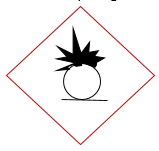This set of Hazardous Waste Management Multiple Choice Questions & Answers (MCQs) focuses on “Risk Management – Exposure Prediction”.
1. Which of the following is not a modelling approach for prediction of exposure in ecological risk assessment?
a) Static representation of the environment
b) Chemical discharge
c) Simplified dynamic approach
d) Site history
View Answer
Explanation: Evaluating organism exposure in ecosystems is a difficult and can be carried out measuring or predicting concentrations in the environment. Current regulatory approaches favour modelling approach, they either use a static representation of the environment and of the chemical discharge or a simplified dynamic approach.
2. Exposure prediction depends upon _______ of exposure.
a) Frequency and intensity
b) Data collection
c) Genetics
d) Agents
View Answer
Explanation: Measurement or estimation of the exposure depends upon the intensity, frequency, and duration of human exposures to agents.
3. Exposure prediction is difficult and complex.
a) True
b) False
View Answer
Explanation: The dimensions of the dose-response relationship usually prove particularly troublesome, primarily because estimates of dose are poor in most collections of epidemiological evidence. Even the quantification of exposure can be difficult.
4. ______ represents a contact between a chemical agent and an object.
a) Dose
b) Response
c) Exposure
d) Concentration
View Answer
Explanation: Exposure represents a contact between a chemical agent and an object which can lead to acute and chronic diseases depending on the rate of exposure.
5. What do the below hazard pictograph stands for?

a) Skin sensitizer
b) Flammable
c) Explosive
d) Dangerous
View Answer
Explanation: Hazard Communication Standard (HCS) require pictographs on labels to alert users of the chemical hazards to which they may be exposed. Explanation marks stands for irritant (skin and eye), skin sensitizer, acute toxicity (harmful), narcotic effects, respiratory tract irritant, hazardous to Ozone layer.
6. What does the below hazard pictograph represent?

a) Toxicity
b) Acute toxicity
c) Oxidisers
d) Chronic toxicity
View Answer
Explanation: Flame over circle symbol on a chemical label means that the substance is an oxidizer. Oxidizers may cause a fire by increasing the concentration of oxygen in the air.
7. What do the below hazard pictograph indicate?

a) Explosives
b) Flammable
c) Toxic
d) Dangerous
View Answer
Explanation: Indicates explosives with very insensitive substances which have a mass explosion hazard and the asterisk is replaced by the compatibility code.
8. Which of the following is not a function of hazard pictogram?
a) Identification of the product
b) Analysis
c) Danger or warning
d) Hazard statements
View Answer
Explanation: Precautionary statements are one of the key elements for the labelling of containers under the GHS, along with an identification of the product, a signal word – either danger or warning hazard statements, indicating the nature and degree of the risks posed by the product and the identity of the supplier.
9. ________ identifies and quantifies pathway of exposure.
a) Exposure assessment
b) Risk assessment
c) Toxicity assessment
d) Risk assessment
View Answer
Explanation: Exposure assessment includes three steps which are characterization of the exposure setting (e.g., point source), identification of exposure pathways (e.g., groundwater) and quantification of the exposure (e.g., microgram/L water).
10. Exposure effect is more in adults than that of children.
a) True
b) False
View Answer
Explanation: The sensitivity rate is more in infants, elderly, pregnant women, and those with chronic illness.
Sanfoundry Global Education & Learning Series – Hazardous Waste Management.
To practice all areas of Hazardous Waste Management, here is complete set of 1000+ Multiple Choice Questions and Answers.
If you find a mistake in question / option / answer, kindly take a screenshot and email to [email protected]
- Check Civil Engineering Books
- Apply for Civil Engineering Internship
- Practice Civil Engineering MCQs
- Check Hazardous Waste Management Books
